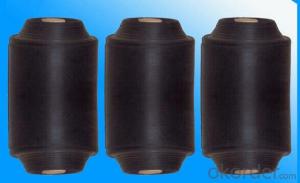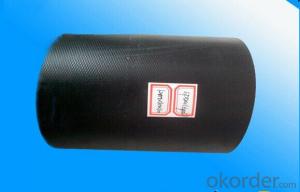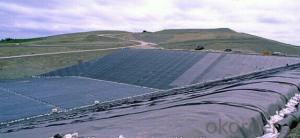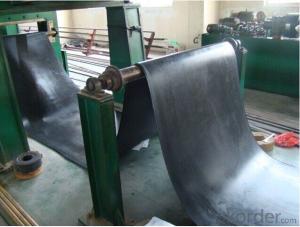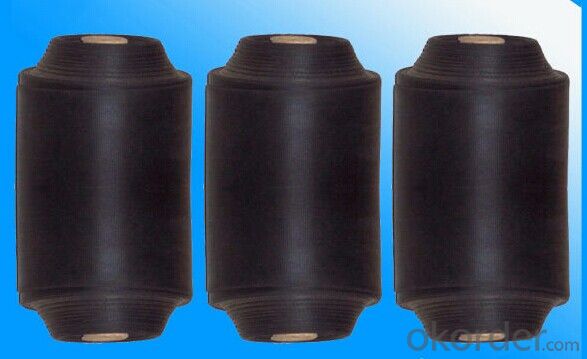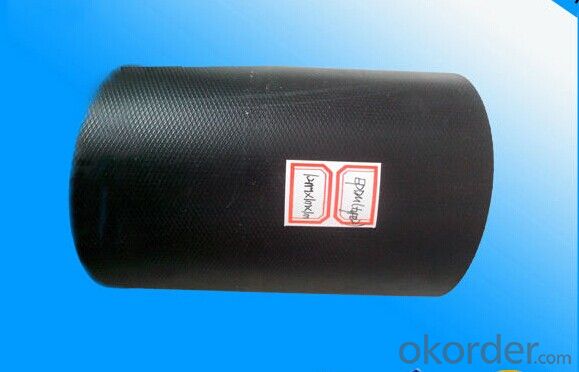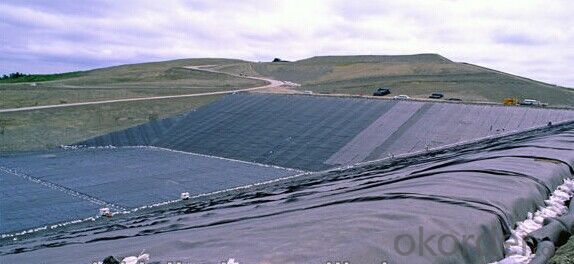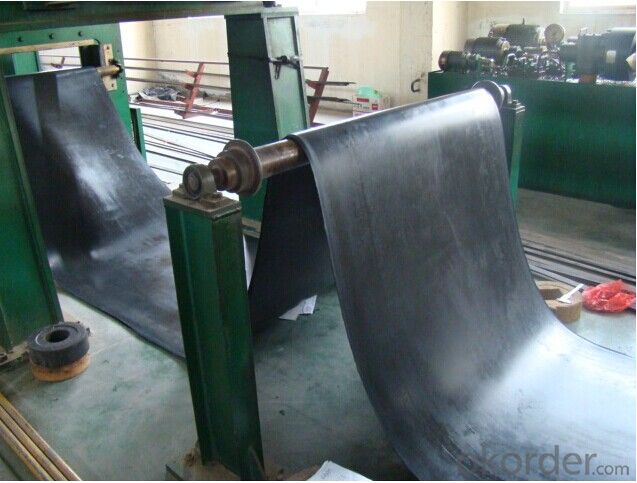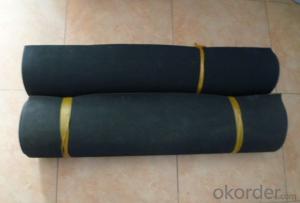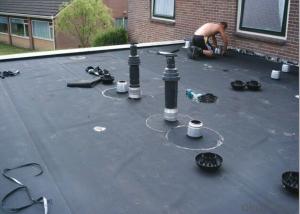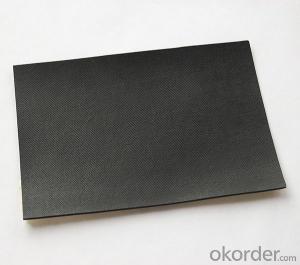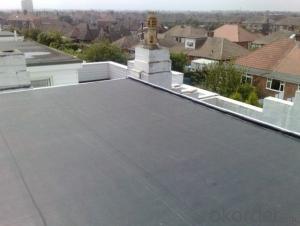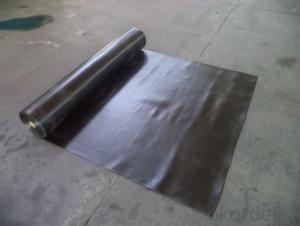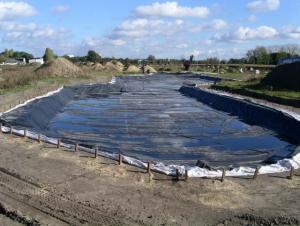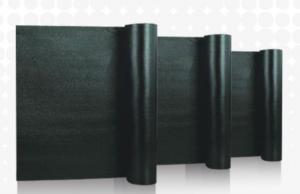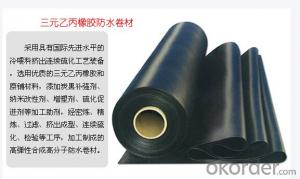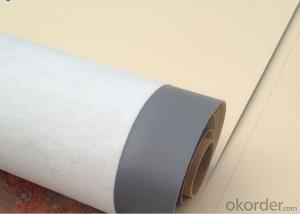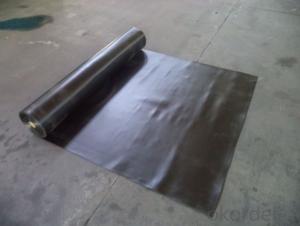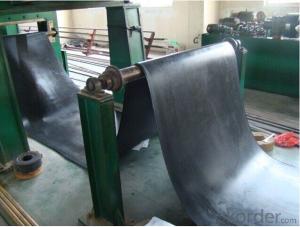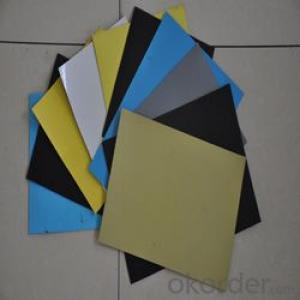EPDM Coiled Rubber Waterproof Membrane Manufacturer
- Loading Port:
- Qingdao
- Payment Terms:
- TT OR LC
- Min Order Qty:
- 2000 m²
- Supply Capability:
- 10000 m²/month
OKorder Service Pledge
OKorder Financial Service
You Might Also Like
EPDM Coiled Rubber Waterproof Membrane
1. Introduction
This waterproof coiled material is of high elasticity with best performance among high polymer waterproof coiled material in the world, it is also the most typical one in the world.
Waterproof coiled material made of ternary ethylene-pro-pylene rubber of DHK is produced with the use of the most advanced continuous extrusion and vulcanization technology and related equipments which are specially designed for production of such product. It is good in compactness, without bubble and performance difference in length and breadth, performances reach or exceed the demands of GB 18173.1-2000 standard.
2. Characteristics
1.Excellent weather resistance, durability and size stability
2.Good adaptability to high and low temperature, UV resistant and anti-corrosion
3. High tensile strength and good elongation, accommodating to structure movement.
4. Easy installation, solid joint, and no environmental pollution
5. Good rooting penetration resistance.
6. Service life up to 50 years
3. Specification:
Type | EPDM Waterproof Membrane | |||
Material | EPDM Rubber | |||
Thickness | 1.0mm | 1.2mm | 1.5mm | 2.0mm |
Size | 1.2m(width) * 20m(length)/roll | |||
Type | Vulcanized | |||
Pattern | Non-reinforced(homogeneous) | |||
Packing | 24sqm--80sqm/roll, with plastic bag | |||
Color | Black | |||
Application | Roofs, basement, pond, Lake, steel structure roof, swimming pool, underground, tunnel, etc | |||
5. Some photos:
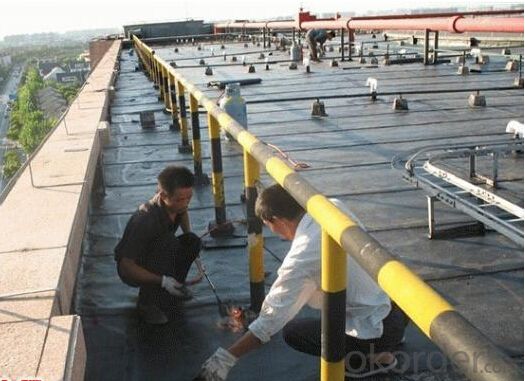
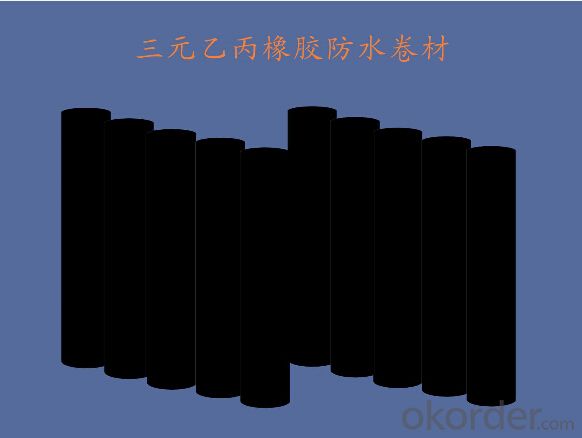
- Q: Can a waterproofing membrane be used in fountains or water features?
- Yes, a waterproofing membrane can be used in fountains or water features. Waterproofing membranes are designed to create a barrier that prevents water from seeping through, making them ideal for applications where water containment is essential, such as fountains or water features.
- Q: What is the difference between a liquid and sheet-type waterproofing membrane?
- The main difference between a liquid and sheet-type waterproofing membrane is their physical form and application method. A liquid membrane is typically applied as a liquid coating that dries to form a seamless, flexible, and durable waterproofing layer. It is often used for irregular or hard-to-reach surfaces and can be easily applied using a brush, roller, or spray. On the other hand, a sheet-type membrane is a pre-made sheet or roll that is applied to a surface using adhesive or heat welding. It provides a continuous, barrier-like waterproofing layer and is commonly used for large, flat surfaces. Overall, the choice between a liquid and sheet-type membrane depends on the specific project requirements, surface characteristics, and application preferences.
- Q: Are waterproofing membranes resistant to seawater?
- Indeed, waterproofing membranes exhibit resistance to seawater. Specially crafted to serve as a shield against water, these membranes are engineered to endure the unforgiving circumstances presented by seawater. Their composition boasts materials that possess exceptional resistance against the corrosive nature of saltwater, and thorough testing is conducted to verify their efficacy in impeding water infiltration, including the detrimental impact of seawater. Therefore, waterproofing membranes prove to be an optimal selection for scenarios where the exposure to seawater is a relevant concern, such as in marine structures, coastal edifices, and swimming facilities.
- Q: How does a waterproofing membrane handle movement of a building due to settling or seismic activity?
- A waterproofing membrane is designed to accommodate the movement of a building caused by settling or seismic activity. It offers a flexible and elastic barrier that can stretch and contract with the building's movements, preventing any water penetration. When a building settles or experiences seismic activity, it can undergo significant structural movements. These movements can cause cracks, shifts, or changes in the building's foundation, walls, or floors. Without proper waterproofing, water can seep through these cracks or gaps, leading to water damage, mold growth, and structural deterioration. To address this, waterproofing membranes are typically made of materials that have excellent elongation and recovery properties. Elongation refers to the membrane's ability to stretch without tearing, while recovery refers to its ability to return to its original shape after being stretched. This flexibility allows the membrane to move with the building, rather than resisting or cracking under the stress. Moreover, waterproofing membranes are installed in a way that allows for horizontal and vertical movement. They are often applied in layers, with overlapping seams to create a continuous barrier. This layered approach accommodates any potential shifts or settlements in the building by allowing the membrane to move and adjust accordingly. In areas prone to seismic activity, additional measures may be taken to reinforce the waterproofing system. These can include the use of specialized membranes that have higher elongation and recovery properties or the incorporation of reinforcement elements such as fabric or mesh to enhance the membrane's ability to handle movement. In summary, a waterproofing membrane is specifically designed to handle the movement of a building caused by settling or seismic activity. Its flexibility, elongation, and recovery properties, along with proper installation techniques, allow it to accommodate the building's movements while maintaining a watertight barrier.
- Q: Can waterproofing membranes be used on concrete block walls?
- Yes, waterproofing membranes can be used on concrete block walls. In fact, it is often recommended to use waterproofing membranes on concrete block walls to prevent water infiltration and moisture damage. Waterproofing membranes are designed to create a barrier against water and can be applied to the exterior or interior surface of the concrete block walls. These membranes provide an additional layer of protection, preventing moisture from seeping into the walls and causing issues such as mold growth, efflorescence, and deterioration of the concrete blocks. By using waterproofing membranes, you can ensure the longevity and durability of your concrete block walls.
- Q: Can a waterproofing membrane be used in kitchens?
- Certainly! Kitchens can indeed benefit from the application of a waterproofing membrane. It is strongly advised to employ such membranes in spaces that are susceptible to moisture and water, like kitchens. These specialized membranes are engineered to establish a shield against water, thwarting its infiltration into the foundation and safeguarding it against harm. They are frequently utilized on floors, walls, and even countertops to ensure a tight seal that resists water damage, the growth of mold, and various other complications. Moreover, waterproofing membranes can aid in soundproofing while enhancing the sturdiness and lifespan of kitchen surfaces.
- Q: Is a waterproofing membrane suitable for both residential and commercial applications?
- Yes, a waterproofing membrane is suitable for both residential and commercial applications. A waterproofing membrane is a versatile material that can be used in various settings to protect buildings and structures from water damage. Whether it is a residential home or a commercial building, a waterproofing membrane can be applied to foundations, roofs, walls, and other areas that are susceptible to water infiltration. It provides a protective barrier that prevents water from seeping into the structure and causing damage such as leaks, mold, and deterioration. Additionally, a waterproofing membrane can be customized to meet the specific needs and requirements of both residential and commercial applications, making it a suitable choice for any type of building.
- Q: Can a waterproofing membrane be used for elevator pits?
- One can utilize a waterproofing membrane for elevator pits. Elevator pits, typically situated at the lowest level of a building, are susceptible to water infiltration, particularly in regions with high groundwater levels or heavy precipitation. By implementing a waterproofing membrane in the elevator pit, the ingress of water can be prevented, thereby averting harm to the elevator machinery and preserving the pit's structural integrity. Waterproofing membranes are engineered to establish a barrier against water penetration and can be employed on both the walls and floor of the elevator pit to ensure optimal protection. It is imperative to select a top-notch waterproofing membrane that is specifically intended for below-grade applications and can endure continual exposure to moisture. Moreover, the proper installation by skilled professionals is vital to guarantee the efficiency and longevity of the waterproofing system.
- Q: What is the meaning of "channel" and "layer" in the practice of polymer waterproofing membrane?
- Corresponding material thickness in line with the requirements of a layer of waterproof water called a waterproof.
- Q: What are the different thickness options for a waterproofing membrane?
- The different thickness options for a waterproofing membrane typically range from 10 mils to 40 mils, with some specialty options available in even greater thicknesses.
Send your message to us
EPDM Coiled Rubber Waterproof Membrane Manufacturer
- Loading Port:
- Qingdao
- Payment Terms:
- TT OR LC
- Min Order Qty:
- 2000 m²
- Supply Capability:
- 10000 m²/month
OKorder Service Pledge
OKorder Financial Service
Similar products
Hot products
Hot Searches
Related keywords
